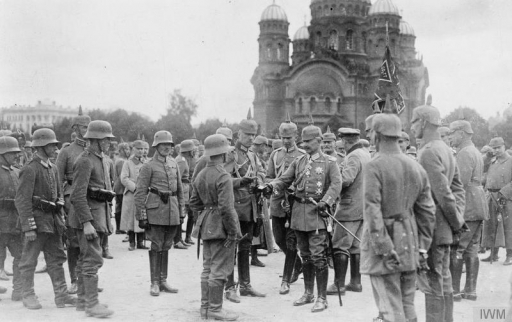The German Army captured Warsaw on August 4-5th 1915 as part of an offensive against the Russians across the Eastern Front.
The fall of Warsaw marked the latest in a series of victories for the Central Powers which had started with the Gorlice-Tarnów offensive in southern Poland in May 1915.
Poland’s present-day capital lay under Russian rule at the outbreak of the First World War.
Its capture was followed by a major Russian withdrawal, known as the Great Retreat, aimed at preventing the risk of encirclement.
Short of both troops and artillery, Russia’s forces occupied a bulge in the front line. The Polish salient was exposed to attacks from East Prussia, the Baltic region and the Austro-Hungarian province of Galicia.
By the end of September 1915, the Russians had fallen back to a new line running from the Baltic through Belarus and the Pripyet Marshes to the Romanian border.
The summer of defeats cost the Russian commander-in-chief, Grand Duke Nicholas, his job. Tsar Nicholas II took direct control of his armies on August 21st.
Brest-Litovsk also fell to the Germans in August, followed in September by Vilna (now Vilnius, capital of Lithuania).
In March 1918, the new Bolshevik rulers of Russia met the Central Powers’ representatives at Brest-Litovsk to sign the treaty ending Russian participation in the First World War.
Sources: Wikipedia/various
Images courtesy of Imperial War Museums © IWM (Q 70782)
Posted by: Peter Alhadeff/Centenary News
